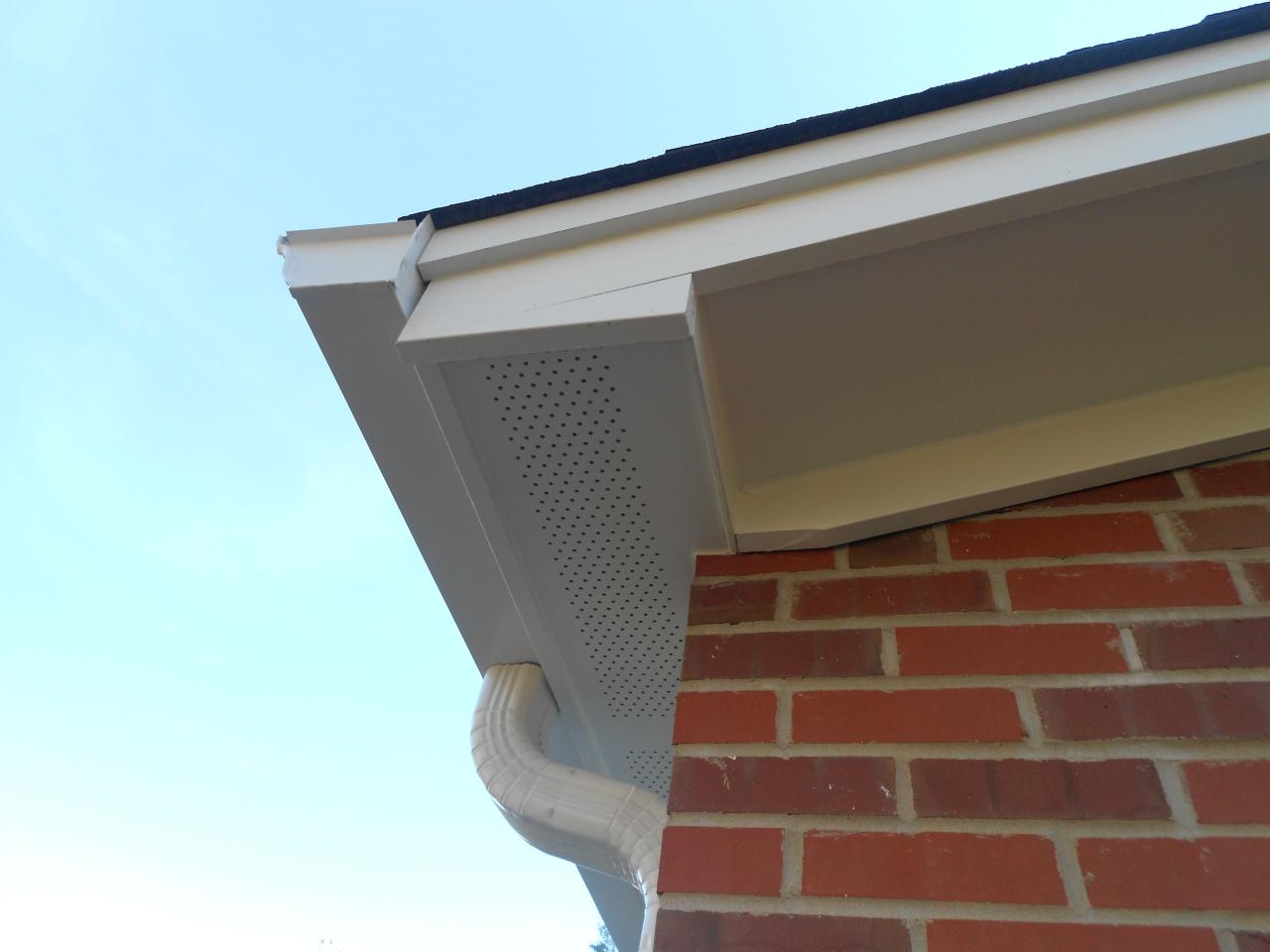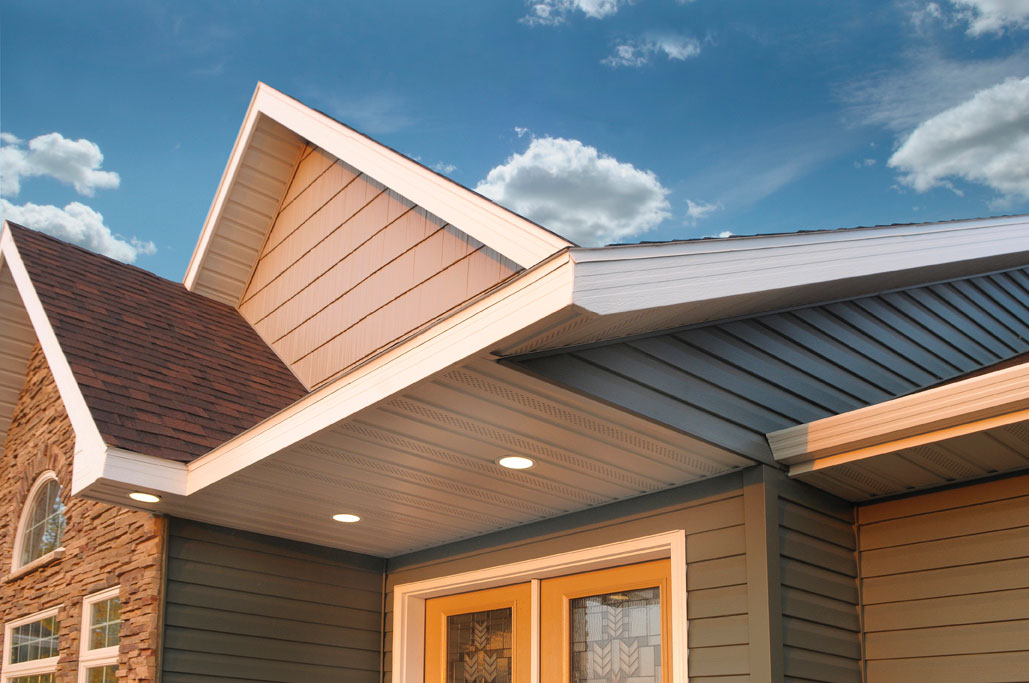Exploring Fascia Siding: A Comprehensive Guide
Embark on a journey through the world of fascia siding, a crucial element in construction that often goes unnoticed. From its functions to the installation process, this guide will delve into every aspect you need to know about fascia siding.
With a plethora of materials and styles available, understanding fascia siding is essential for maintaining the integrity and aesthetics of any building.
Introduction to Fascia Siding

Fascia siding is a crucial component of building construction that serves both functional and aesthetic purposes. It is typically installed along the roofline of a building, connecting the roof to the outer walls. This horizontal band not only enhances the overall appearance of a structure but also plays a vital role in protecting the roof and exterior walls from weather elements and water damage.
Materials Used for Fascia Siding
Various materials are commonly used for fascia siding, each offering unique benefits and considerations:
- Wood: Traditional and versatile, wood fascia provides a natural look but requires regular maintenance to prevent rot and decay.
- Vinyl: Low-maintenance and cost-effective, vinyl fascia is durable and resistant to moisture, making it a popular choice for many homeowners.
- Aluminum: Lightweight and weather-resistant, aluminum fascia is known for its durability and ability to withstand harsh climates.
- Composite: Made from a combination of materials, composite fascia offers the look of wood with enhanced durability and resistance to rot, insects, and moisture.
Types of Fascia Siding
When it comes to fascia siding, there are various types of profiles available that can impact the overall aesthetics and functionality of a building. Let’s explore the different types of fascia siding, including smooth, vented, and beaded options.
Smooth Fascia Siding
Smooth fascia siding offers a sleek and modern look to a building. It provides a clean finish that can complement various architectural styles. This type of fascia siding is easy to maintain and can be painted in different colors to suit the design preferences of the homeowner.
Vented Fascia Siding
Vented fascia siding is designed to provide ventilation to the attic space of a building. It helps prevent moisture buildup and promotes air circulation, which can be essential for maintaining the structural integrity of the roof. This type of fascia siding is ideal for areas with high humidity or moisture levels.
Beaded Fascia Siding
Beaded fascia siding features a decorative bead along the edge, adding a touch of elegance and visual interest to the building’s exterior. This type of fascia siding is available in various styles and colors, allowing homeowners to customize the look of their property.
Beaded fascia siding is durable and can withstand harsh weather conditions.Overall, the choice of fascia siding material and profile can significantly impact the aesthetics and functionality of a building. It is essential to consider factors such as durability, maintenance requirements, and design preferences when selecting the right type of fascia siding for your property.
Installation Process of Fascia Siding
Installing fascia siding is a crucial step in protecting your home from water damage and enhancing its exterior aesthetics. Here is a detailed guide on how to properly install fascia siding.
Preparation and Measurements
Before starting the installation process, ensure that the surface is clean, dry, and free of any debris. Take accurate measurements of the fascia board to determine the length and width of the siding needed.
Cutting the Siding
- Use a saw specifically designed for cutting siding materials to ensure clean and precise cuts.
- Follow the measurements taken earlier to cut the fascia siding panels to the required size.
- Be cautious and wear appropriate safety gear when cutting the siding to prevent injuries.
Attachment of Fascia Siding
- Start by attaching the siding panels to the fascia board using nails or screws, ensuring they are properly aligned and spaced.
- Secure the siding at regular intervals to provide adequate support and prevent sagging or warping over time.
- Consider using adhesive along with nails or screws for additional strength and stability.
Common Tools and Equipment
Some common tools and equipment required for installing fascia siding include:
| Saw | To cut the siding panels accurately. |
| Tape Measure | For taking precise measurements of the fascia board and siding panels. |
| Nails/Screws | To attach the siding panels securely to the fascia board. |
| Adhesive | For added strength and stability of the siding. |
Tips for Proper Installation
- Ensure proper ventilation behind the siding to prevent moisture buildup and potential water damage.
- Paint or seal the edges of the siding panels to protect them from moisture and prolong their lifespan.
- Regularly inspect the fascia siding for any signs of damage or wear and tear to address issues promptly.
Maintenance and Repair of Fascia Siding

Regular maintenance of fascia siding is crucial to extend its lifespan and prevent costly damage. By addressing common issues promptly and following best practices for repairs, homeowners can ensure the integrity of their home’s exterior.
Common Issues with Fascia Siding
- Rot: Moisture exposure can lead to rot in fascia boards, compromising their structural integrity. Regular inspections can help identify and replace rotted sections.
- Peeling Paint: Over time, paint on fascia siding may begin to peel, exposing the material to the elements. Repainting damaged areas can help prevent further deterioration.
- Pest Infestations: Insects and rodents can find their way into gaps or damaged sections of fascia siding. Sealing off entry points and repairing any damage can deter pests from causing further harm.
Repairing Damaged Fascia Siding
- Patching: Small areas of damage can often be patched with a suitable material to reinforce the fascia board and prevent further issues.
- Repainting: Restoring the paint on fascia siding not only improves aesthetics but also provides a protective barrier against moisture and UV damage.
- Replacing Sections: In cases of severe damage or extensive rot, replacing sections of fascia siding may be necessary to maintain the structural integrity of the home.
Outcome Summary

In conclusion, fascia siding plays a vital role in protecting your property from the elements while enhancing its visual appeal. By following proper maintenance and repair techniques, you can ensure the longevity and durability of your fascia siding.
Key Questions Answered
What are the common materials used for fascia siding?
The common materials used for fascia siding are wood, vinyl, aluminum, and composite.
What are the different types of fascia siding profiles available?
Some types of fascia siding profiles include smooth, vented, and beaded.
How can I address common issues like rot or peeling paint with fascia siding?
Common issues with fascia siding can be addressed by repairing damaged sections through patching, repainting, or replacing.




